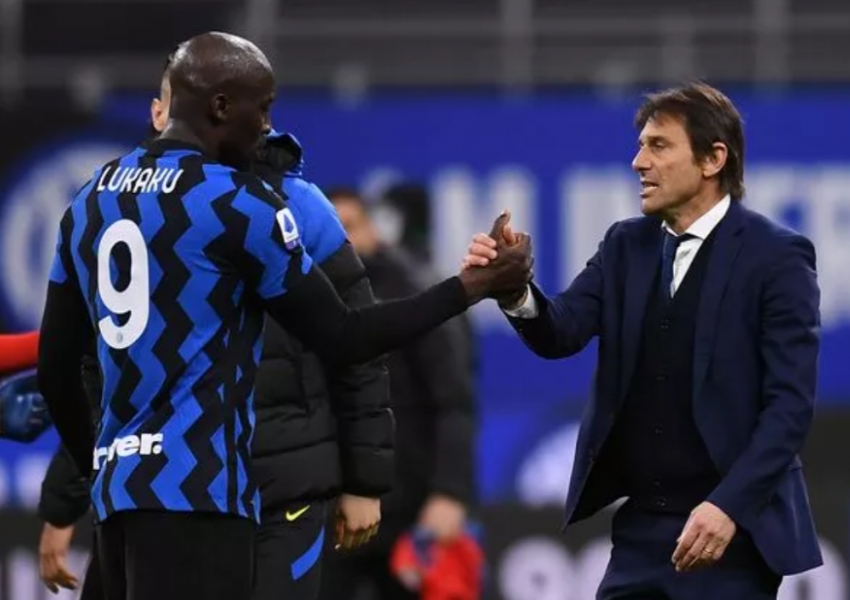Inter Milan's Outstanding News: €200 Million Debt Reduction in 21 Months, Gradually Emerging from Conte Era’s Financial Pit
Inter Milan has been on a remarkable journey, capped by their recent crowning achievement of securing their second star. The news surrounding the club is overwhelmingly positive, not just in tactical terms, such as the breakthrough in Lautaro Martinez’s contract negotiations, but in strategic financial strides. Financial experts have confirmed that Inter has significantly reduced its total external debt from €881 million, cutting down at least €200 million over 21 months. This external debt calculation excludes debts owed to Inter by other clubs and focuses solely on what Inter owes externally.

As of July 2022, Inter’s official debt stood at €881 million. By July 2023, this figure had decreased to €807 million. Financial analysts point out that, based on Inter’s financial data up to the first quarter of 2024, the total debt by the end of March is expected to fall below €700 million, potentially between €650 and €680 million. This reduction of over €200 million from the €881 million figure 21 months ago signifies a substantial financial turnaround for the club.

For some time, doom-mongers have capitalized on the “€800 million debt” narrative to predict Inter’s collapse. However, this claim has become outdated, and now they must acknowledge the reduced figure of €600 million-plus. This trend indicates that Inter is moving in the right direction.

In January, we detailed the origins of the €800 million debt, which comprised various components:
- Sports-related debts: €95 million, primarily owed to agent companies and scheduled for payment in installments similar to transfer fees.
- Tax and public sector debts: €93.5 million.
- Debts owed to other clubs for transfer fees: €145 million.
- Financial debts: €408 million.
- Other debts: €54 million.
The key reasons for the reduction in external debt are threefold:
Firstly, Steven Zhang’s efforts have been crucial. A significant portion of the “other debts” stemmed from Zhang injecting €50 million into the club last season, creating a debt owed to the majority shareholder. This was largely converted into equity at the shareholders' meeting at the beginning of the year, significantly reducing this debt segment.
Secondly, Inter paid off many liabilities in the first quarter of this year. Traditionally, February and March are critical fiscal periods for the club, as many “loan-to-buy” player buyout clauses are activated in February (such as Asllani last season and Frattesi and Arnautovic this season). Additionally, numerous taxes, installment payments for transfers, commission payments, and sports equipment costs are settled during this period. Since half of Inter’s external debt comprises such liabilities, partial payment naturally reduces the overall debt figure.
Most importantly, the high expenditure and resultant high debt incurred during Antonio Conte’s tenure are being gradually paid off, while the cost of building the team under Simone Inzaghi is relatively lower. For instance, most of Inter’s recent transfers have been paid in installments, meaning over the past 21 months, the club has been settling many of the transfer fees from Conte’s era. As these payments are completed, the external debt decreases significantly.
Inter’s recent transfers also involve installment payments, which count as new debts until fully paid. However, the team-building cost-effectiveness has improved significantly in recent years. For example, this season, Inter generated €129.3 million from player sales, including Onana, Brozović, Mulattieri, Colidio, and Lazaro, while spending €70.75 million on acquisitions like Pavard, Asllani, Buchanan, and Bisseck. This results in a net profit of €58.6 million from transfers. This efficient approach ensures that the debt does not balloon as it did under Conte. When “paying off old debts” exceeds “incurring new debts,” the total debt reduction is a natural outcome.
On a side note, an AC Milan fan recently asked why RedBird Capital is hesitant to bring in Antonio Conte, despite his high salary demands. The answer is straightforward: Conte's expenses extend far beyond his salary. His management style involves high transfer market expenditure, which could plunge the club into financial difficulties.
Nonetheless, it’s essential to acknowledge that Inter still faces significant challenges ahead. Financial data reveals an increasing proportion of “net financial debt,” which refers to hard debts owed to banks or institutions that incur interest. Five years ago, Inter’s net financial debt was around €100 million. By July 2023, this had risen to €308.8 million, leading to substantial interest burdens. With the total external debt decreasing, the proportion of net financial debt naturally increases, a predicament Inter must grapple with unless there is a change in ownership or a substantial financial infusion.
In summary, Inter cannot afford to revert to Conte-era practices of heavy spending with poor Champions League results that leave the club in financial turmoil. Instead, they must recognize their financial constraints, adhere to the team-building strategy of the past two years, control costs, and boost revenues to gradually improve their financial situation. Regardless, the second star has brought substantial revenue, and reducing external debt by €200 million over 21 months is a remarkable achievement. If this trend continues, the narrative of Inter’s collapse will fall apart, proving that the Nerazzurri can not only survive but thrive.
Copyright Statement:
Author: mrfootballer
Source: Mrfootballer
The copyright of this article belongs to the author. Reproduction is not allowed without permission.
Recommended Blog
- Inter Milan's Summer Transfer Window: Zero Budget or Starting at a Negative €25 Million? Rising Star Sets the Example
- Inter Milan's Dual Battles Heat Up: Steven Zhang Races Against Time, Executive's Comment Sparks Lautaro Debate
- Key Executive Explains Why Inter Milan Abandoned Early Chinese Investment Strategy: Spider Alvarez Controversy and the Unavoidable South America Shift
- Triple Crown Legend: Inter's Third Signing Sealed? Reality Reveals Significant Price Discrepancies
- How Inter Might Use Zhang Kangyang's €50 Million "Surplus" After Loan Renewal: Two Paths to Sign Big-Name Players
- New Inter Signing's Tears Earn Praise Before Arrival, While Inter Rejects Manchester United Swap Deal Again
- Zhang Kangyang’s New Loan and Simone Inzaghi’s Contract Extension: The Intriguing “2027 Bind”
- Inter's Terrifying Beast Fills Seven-Year Gap, Another Surprise Talent Sets Serie A Record
- Inter to Secure €8 Million Sale, Marseille Exit Exposes Striker Dilemma: Is an €85 Million Sale the Answer?
- Serie A Giants Unite Against League Chief: Inter, Juventus, AC Milan Stand Together
Hot Blog
- English Media: Manchester United Will Win Premier League Title in 2028! History Will Repeat Itself, Two Teams Serve as Inspirations
- 0-2 Double Defeat! China National Team Stuck at 6 Points: No More Direct World Cup Hopes, Two Crucial Matches Ahead
- 4 AM Showdown: Barcelona's Revenge Match! Win = 3-Point Lead Over Real Madrid, Key Players Rested
- China National Football Team Drops 13.6 Points, Slips to 94th in FIFA Rankings: Syria Overtakes, New 9-Year Low
- 0-0 Draw! Japan 12 Shots, 2 Missed One-on-Ones: 8 Matches, 20 Points, Group Winner, Saudi Arabia Stuck at 10 Points in 3rd
- 4-1, Double Win Over Brazil! Argentina Celebrates: World Cup Qualification Secured, 4th Team Globally to Qualify
- Real Madrid Got Lazy: 7 Kilometers Less Running in UCL! Two Superstar Spectators While Barça Outruns Them All
- United Go for Glory: Unbeaten in 10, Fueled by Kobbie Mainoo’s Return, Red Devils Eye Europa League Crown
- Champions League Classic: Barça’s Midfield Maestro Worshipped by Thousands After 11.5KM Marathon
- Champions League Semifinal Odds: Barça at 99%, Real Madrid’s Hopes Dwindle to 6%, PSG Cruise Ahead